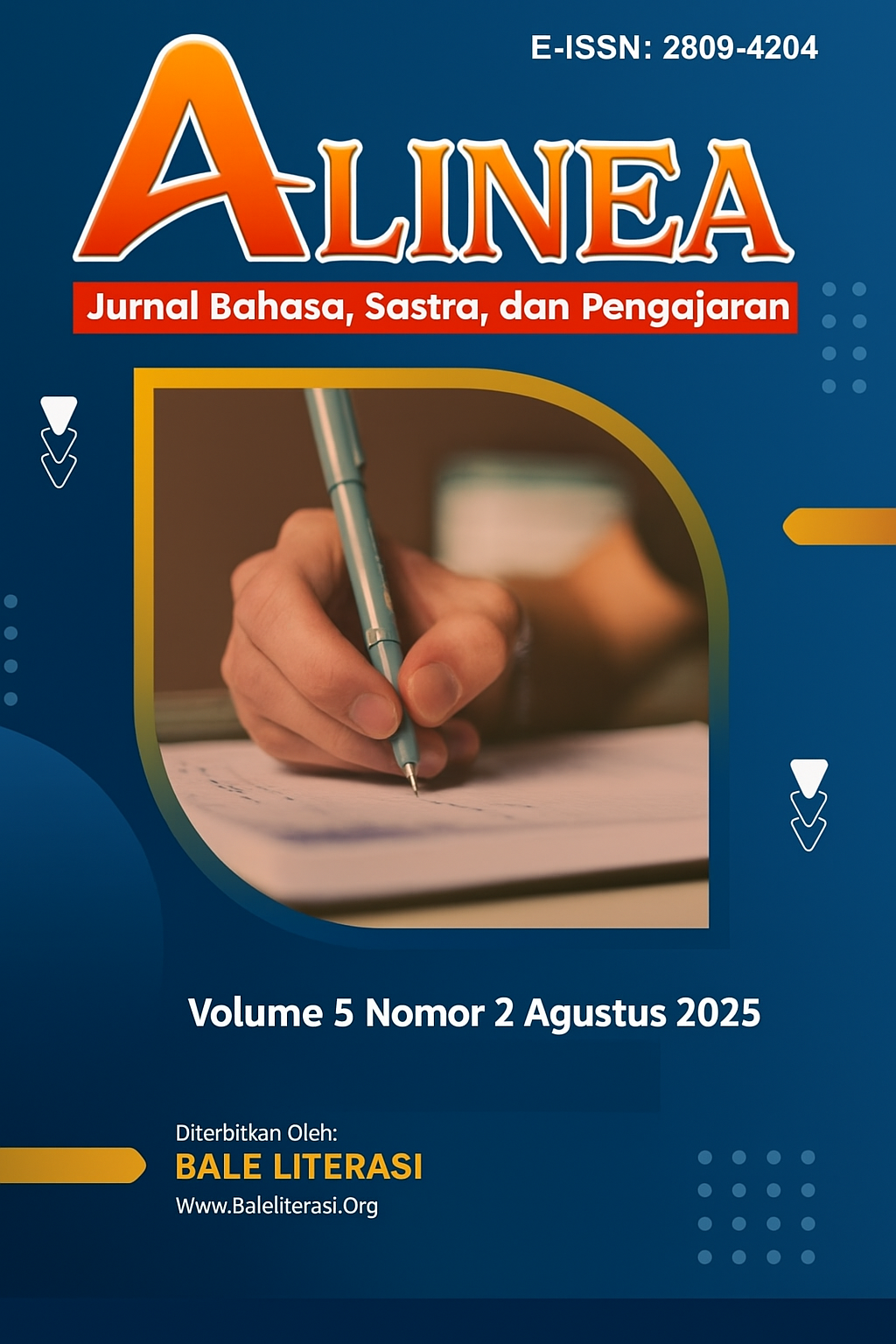Analysis Of Lexical Semantic Ambiguity In Translating Indonesian Sentences Into English Using Google Translate And Chat-GPT
Abstract
The background of this study focuses on the importance of accuracy in translating sentences containing lexical ambiguity. Misunderstandings often occur in cross-language understanding because each language must have a translation tool by selecting and translating sentences with many possible meanings. This study aims to analyze the results of translating Indonesian sentences containing lexical ambiguity into English using two translation engines, namely Google Translate and ChatGPT. The method used is descriptive qualitative with a content analysis approach. Data in the form of sentences containing ambiguity were collected and translated using both tools, then analyzed based on semantic theory and translation theory. The results of the study show that both translation tools are able to translate ambiguous sentences with varying degrees of success. The results of the analysis show that both Google Translate and ChatGPT have the ability to translate sentences where there is a meaning with varying degrees of success. ChatGPT tends to produce translations that are more contextual and closer to the actual meaning than Google Translate which tends to translate literally. Thus, it can be concluded that the development of translation technology must consider the ability to understand context semantically so that the translation results are more accurate and natural.References
Acquaviva, P., Lenci, A., Paradis, C., & Raffaelli, I. (2020). Models of lexical meaning. In Word Knowledge and Word Usage. https://doi.org/10.1515/9783110440577-010
Adolph, R. (2016). 済無No Title No Title No Title. 6(1), 1–23.
Arts, F. (2009). An Analysis Of Ambiguity In The Articles Of The Jakarta Post Faculty of Letters and Fine Arts CHAPTER I.
Bastian, Y. (2014). Referential And Situational Implicit And Explicit Meaning Translation In Diary Of A Wimpy Kid: The Ugly Truth 5 By Jeff Kinney A Thesis Submitted to Faculty of Adab and Humanities In Partial Fulfillment of the Requirements for The Degree of Letters Schola.
Bueke, M., Adam, S. H., & Dahlan, S. (2023). Students’ Translation of English Text Into Indonesian Text At the Fifth Semester of Khairun University. Jurnal Bilingual, 13(1), 12–20. https://doi.org/10.33387/j.bilingual.v13i1.6467
Davis, W. L. (2020). A Theory of Translation. Visions in a Seer Stone, 160–192. https://doi.org/10.5149/northcarolina/9781469655666.003.0008
Garza-Reyes, J. A. (2012). Table of Contents Table of Contents ی ﺮ ﺘ ﮐ د ﻪ ﺒ ﺣ ﺎ ﺼ ﻣ ز ﺎ ﯿ ﭘ ﺎ ﺗ ﺮ ﯿ ﺳ ز ا. European University Institute, 2, 2–5.
Herman Wijaya, H., & Laila Sufi Wartini, L. (2019). Relasi Makna dalam Lirik Lagu Perjuangan Nahdlatul Wathan Karya TGKH. M. Zainuddin Abdul Majid (Kajian Semantik). Jurnal SeBaSa, 2(01), 41–51.
Hutasoit, H. (2016). Figurative Language Found in Victor Hugo’S Les Miserable Novel: a Semantics Approach. Jurnal Arbitrer, 3(1), 36–45. https://doi.org/10.25077/ar.3.1.36-45.2016
Jurniawan, P. A. (2024). an Analysis of Idiomatic Expression in Joji’S Song Lyrics.
Muslimah, O. A., & Devita, A. A. (2023). Research on Applied Linguistics and Literature Metaphor Analysis In “Death By A Thousand Cuts” And “False God” Song Lyrics By Taylor Swift. Research on Applied Linguistics and Literature, 1(1).
Ramadhanti, N. D., & Gusthini, M. (2025). Analisis Strategi Penerjemahan dalam Buku Petunjuk Alat Pemantau Tekanan Darah Otomatis. 5(1), 285–297.
Susanto, H., Triani, S. N., Sunarsih, E., Nurwati, N., Fitriyadi, S., Kamaruddin, K., Yanti, L., & Dewi, R. (2022). Analysis of the Meaning of Referential and Non-Referential Lyrics of the Malay Song Sambas on the Album of Terigas 2. International Journal of Multi Discipline Science (IJ-MDS), 5(1), 10. https://doi.org/10.26737/ij-mds.v5i1.3118
Suyitno, I. (2017). The Cultural Meaning of Traditional Expressions in Daily Speech of Using Community at Banyuwangi. Jurnal Humaniora, 29(2), 215. https://doi.org/10.22146/jh.v29i2.25896
Ugwu, Chinyere, N; Eze Val, H. U. (2017). International Digital Organization for Scientific Research IDOSR. Idosr Journal of Science and Technology, 3(1), 37–46.
Ummah, M. S. (2019). No 主観的健康感を中心とした在宅高齢者における 健康関連指標に関する共分散構造分析Title. Sustainability (Switzerland), 11(1), 1–14.
WIjaya, H., Fakihuddin, L., Ernawati, T., & Gani, R. H. A. (2024). Symbolic and Philosophical Meanings of Religion and Politics in Hamzanwadi’s Wasiat Renungan Masa Pengalaman Baru: A Semiotic Perspective. Wawasan: Jurnal Ilmiah Agama Dan Sosial Budaya, 9(2), 77–92.
Wijaya, H., & Wartini, L. S. (2019). Relasi Makna dalam Lirik Lagu Perjuangan Nahdlatul Wathan Karya TGKH. M. Zainuddin Abdul Majid (Kajian Semantik). SeBaSa, 2(1), 41–54.
Woulnisev, K. (2021). The Analysis of Figurative Language in Justin Bieber’s Selected Songs. Research in English and Education, 6(4), 173–179.
Zidratul, M., Program, E. E., Of, F., & Training, T. (2022). A thesis.
Copyright (c) 2025 Daniel Binsah Lumban Gaol, Bernieke Anggita Ristia Damanik

This work is licensed under a Creative Commons Attribution 4.0 International License.















